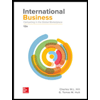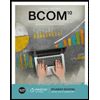QSO-450 5-3 Case Study Motorola - Bailey
.docx
keyboard_arrow_up
School
Southern New Hampshire University *
*We aren’t endorsed by this school
Course
450
Subject
Business
Date
Jan 9, 2024
Type
docx
Pages
3
Uploaded by bay2175
Running Head: QSO 450 5-3 CASE STUDY: MOTOROLA
1
QSO 450: 5-3 Case Study: Motorola
Geoffrey Bailey
04 June 2022
Southern New Hampshire University
QSO 450: 5-3 Case Study: Motorola
2
1.
How will Motorola benefit from integrated supply chain strategy as opposed to a traditional strategy? Support your claim.
The chief benefit for Motorola will come from creating a unified system that will work across all of Motorola’s various business segments. In addition, the concept of creating one unified organization, all playing by the same rules, has the benefit of boosting moral since one department is not favored over another. These moves will not only save money due to the economies of scale effect, but it also has a tangential effect of falling into line with the company’s core value system. “Care was taken to always ensure that the ISC’s strategies dovetailed with Motorola’s company-wide “i’MOTO” values. In fact, the ISC serves as a great example, if not one of the best examples within Motorola, of the “One Motorola” concept – which is a key component of i’MOTO. To transform multiple supply chains into one integrated organization, the ISC’s efforts serve as tangible proof of the importance of operating as One Motorola”
(Motorola, 2007)
. 2.
Who were the key stakeholders within the integrated supply chain? The key stakeholders in the integrated supply chain are of course Motorola’s three primary
business units: Connected Home Solutions, Mobile Devices and Networks & Enterprise. The
supply chains for all of these lines of business is managed by the new Integrated Supply Chain
(ISC) organization whos’ role is “to reach across all company businesses, functions and regions
to help achieve efficiency and cost effectiveness”
(Motorola, 2007)
. In addition, the ISC partnered
with a core group of suppliers in order to form meaningful and lasting business relationships.
Finally, Motorola’s customers represented a key group of stakeholders and the ISC group
worked diligently to ensure that each product the company made was bringing its own intrinsic
value to the overall equation.
Your preview ends here
Eager to read complete document? Join bartleby learn and gain access to the full version
- Access to all documents
- Unlimited textbook solutions
- 24/7 expert homework help
Related Questions
With reference to the case study, outline the reasons Ellie had for favouring single sourcing as opposed to multiple sourcing
arrow_forward
With proving examples from the case information provided - Discuss any 4 important supply chain processes?
arrow_forward
Here in case study 3 questions please help me
arrow_forward
Case Study: How Supply Chain Management Problems Killed Target Canada
Identify all the problems Target Canada encountered that prevented it from becoming a successful retailer. What were the management, organization, and technology factors that contributed to these problems?
arrow_forward
Do you think their distribution strategy is effective? Explain.
arrow_forward
CEAT Redesigning Supply Chain System CEAT top management, together with McKinsey, undertook a complete redesigning of their supply chain It was advised first to make use of IT in CEAT for reducing costs and increasing utilization of assets. Second, supply chain management (SCM) should come out of the marketing shadow and take its place as a strategic change initiator and an independent function. The key factors responsible for this change were: • Placing logistics division as the link between manufacturing and marketing, Continuous flow of information for reducing delays and ensuring 100 per cent reliability: Availability of right product at the right place at the right time and quantity: Implementation of SCM down the line for providing effective services, Understanding the markets and customers (3000 dealers, Original Equipment Manufactures (OEMs) and. exports): Detailed planning of the distribution system from multiple factories and warehouses; Identifying factors for correction…
arrow_forward
1-describe supply chain management along with its impact on business
itm211 course!
arrow_forward
Dell, started in a college dorm, delivers custom built PCs direct tocustomers. It has created a whole segment and forced competitorsto change strategy with this “buy-direct” and “made-to-order”strategy• As results indicate, this strategy is paying off• What is sometimes not highlighted is that this is a strategy enabledby leading edge supply chain and manufacturing processes –bothenabled by technology• A customer can build their own computer by using an automatedproduct configuration engine. The order is then electronically linkedto manufacturing and supply chain. Thus demand is always met andmaterials are always brought in time, reducing inventory costs• Dell’s use of technology to create a world beating business modeland its movement from a college dorm to these heights is testimonyto the power of information technology• Where do these competences fit into the Value Chain?
arrow_forward
You are playing the role of the divisional manager of the new e-bike division of Fox Factory Holding Corporation. The divisional manager is preparing to request funding to introduce the product and begin sales. Three options have been identified (note that these are fictitious assumptions):
• Produce the new e-bike internally,
• Outsource manufacturing to another manufacturer, and
• License the design to an existing company for royalties on future sales. Summarize the company's financial performance, referencing key data points from the Balance Sheet and the Income Statement available in the Quarterly Results Links to an external site.
Identify the highlights and areas of concern.
arrow_forward
QUESTIONS
BELOW ARE RELATED TO PERUSAHAAN OTOMOBILE KEDUA SENDIRIAN BERHAD(PERODUA) MALAYSIAS LEADING CAR MANUFACTURE.ESTABLISHED IN 1992 AS A MANUFACTURER OF COMPACT CARS,THE COMPANY HAS SUCCESSFULLY DOMINATED THE DOMESTIC MARKET WITH KANCIL IN ITS EARLY YEARS FOLLOWED BY MYVI IN RECENT YEARS.FROM JANUARY TO AUGUST 2022,THE COMPANY SOLD 171,728 UNITS AS COMPARED TO ITS CLOSET RIVAL PROTON WITH 87,481 UNITS.PERODUA IS ALSO EXPORTING ITS CARS TO A FEW NEIGHBOURING COUNTRIES INCLUDING INDONESIA AND BRUNEI
(A)
USING ANY FOUR(4) ELEMENTS OF PESTLE OR PORTER'S FIVE FORCES,DISCUSS HOW THE EXTERNAL ENVIROMENT MAY SHAPE PERODUA'S MARKET FOR YHE NEXT TWO YERAS.
(B)
ANALYSE PERODUA'S INTERNAL ENVIROMENT AND ELEBORATE ON FOUR(4) OF ITS INTERNAL FACTORS.CLASSIFY THEM INTO MAJOR OR MINOR STRENGTH OR MAJOR OR MINOR WEAKNESSES.
arrow_forward
Multiple Choice Questions
1. Supply chain represents?
a) demand identification and /creation, b) demand fulfillment, c) value for money, d) all of the above
2. Power shift in supply chain has shifted from?
a) manufacturer-Retailers-consumer, b) retailers-manufacturer-consumer, c) consumer-retailers-manufacturer, d)all of the above
3. Which of the following is a driving force for the changing business landscape?
a) integration, b) collaboration, c) globalization, d) all of the above
4. Which of the below is/are characteristics of the supply chain?
a) inventory, b) landed cost, c) real time two way information flow, d) all of the above
5. What involves the network of activities, flow and movement of people, materials and information linking organisations together to serve consumer.
a) globalization, b) transportation, c) supply chain process, d) all of the above
arrow_forward
Bamburi Cement is a cement manufacturing company that has been operating in Kenya for more than ten years. The supply chain of Bamburi includes the suppliers and customers. Effective management of the supply chain relationships is a critical factor in ensuring increased profits by Bamburi.
Required;
Explain two ways that adoption of a modern Enterprise resource planning software such as Microsoft Navision would enable Bamburi to improve the supply chain relationships with the
suppliers and customers.
(b) Explain two ways that a well-developed and designed Accounting system would add value for
an organization such as Strathmore University.
arrow_forward
Distribution and warehousing are key competencies in the Defy supply chain and underline the customer-centric ethos of the company” (SCN Africa, 20201). Conduct a SWOT analysis for Defy. Include factors from all the business environ
arrow_forward
Case Study: How Supply Chain Management Problems Killed Target Canada
This is located on Page 366 of your textbook:
Management Information Systems: Managing the Digital Firm, 15th Edition
What things should Target Canada have done differently to be successful?
arrow_forward
Topic: Purchasing Strategy
Details: Answer the following question.
Q1: How do you think that a procurement strategy can be directly linked to the organization’s strategy and long-term business plan?
arrow_forward
Integration or outsourcing - which one is better for Apple's revenue? Why? How can Apple use Taper integration for its value creation function? Discuss elaborately.
arrow_forward
Explain the scope of supply chain practices in Cadbury Company (NOTE: please explain it with recent trends and in at least 600 words)
arrow_forward
Discuss the external analysis of Amazon related to how the company is using Blue Ocean Strategy.
arrow_forward
Levi Strauss jeans created in 1873 began as a manufacturer of denim workpants with copper rivets used to strengthen the pocket stitching. By listening to its customers, Levi Strauss created the most popular piece of clothing in the world-blue jeans. Levi jeans sold in more than 110 countries has gained competitive advantage through its product offerings, distribution, and customer support.How Does Supply Chain Usage Gain Competitive Advantage within an Industry.Levi Strauss with assistance from customer support created the ‘personal pair’ kiosks that allow women to custom fit and design their own jeans. This innovation, which is part of an eight step process, involves taking four measurements from women with pre-programmed data in the kiosks and with assistance form a sales clerk a final inseam measurement made. After the measurements are made, a pair of jeans can be built to order.The process is guaranteed with home delivery for an additional $5. Even though the “personal pair’ jeans…
arrow_forward
) Caravan Engineering is a leading global manufacturer of brake shoes. As competitors started catching up, the firm instituted a value analysis program, came up with new drawings and specifications for its brake shoe components, and selected suppliers (from a worldwide pool of 1000 suppliers) who offered the best price. The firm also embarked on a business process reengineering (BPR) program and identified new sets of core competencies in marketing, product innovation, assembly, and supply management. The supply management function was revamped and a chief supply officer (CSO) position created. The CPO was made part of the executive committee thus allowing for a tight alignment of supply strategies with the firm’s corporate strategy. Over the next year, the CFO was able to reduce the worldwide supply base from 1000 suppliers to 50 suppliers, build relationships with them through long-term contracts, training, certification, and involving them from the design stage. The results of this…
arrow_forward
Objective: Explore how to use tools such as Porter’s Five Forces model to analyze external forces and market competition.
Porter’s Five Forces analysis for a healthcare hospital -
Provide examples (e.g., competitors, suppliers) as you analyze the five forces.
arrow_forward
Q4. What are the differences between in-house e-commerce development with packaged solutions and service providers?
arrow_forward
Online Discussion 1
ons
Please prepare you response the each question below and submit the responses in separate discussion thread posts with the corresponding
number (1 or 2) for each question. Then, in separate posts, comment on the responses from other students.
con
1. Find and name a company with a superior supply chain management strategy. What are the factors that make this company's SCM strategy
superior? Who are the primary consumers for their products/services? Whích company(s) are the primary retailer for the products? What is the
primary source of supply?
2. What are the implications of supply chain disruptions? Find and explain an example of a supply chain disruption and the implications (both
positive and negative) of the disruption.
over
les
Search entries or author
Unread
Reply
Replies are only visible to those who have posted at least one reply.
Next »
« Previous
arrow_forward
Which product-related factor made them decide their choice of distribution channel? Explain
arrow_forward
Be very detailed
What analysis can you make of how kellogg's could further improve their sustainability practices.
arrow_forward
Mm1
arrow_forward
SEE MORE QUESTIONS
Recommended textbooks for you

BUSN 11 Introduction to Business Student Edition
Business
ISBN:9781337407137
Author:Kelly
Publisher:Cengage Learning

Essentials of Business Communication (MindTap Cou...
Business
ISBN:9781337386494
Author:Mary Ellen Guffey, Dana Loewy
Publisher:Cengage Learning

Accounting Information Systems (14th Edition)
Business
ISBN:9780134474021
Author:Marshall B. Romney, Paul J. Steinbart
Publisher:PEARSON


International Business: Competing in the Global M...
Business
ISBN:9781259929441
Author:Charles W. L. Hill Dr, G. Tomas M. Hult
Publisher:McGraw-Hill Education

Related Questions
- With reference to the case study, outline the reasons Ellie had for favouring single sourcing as opposed to multiple sourcingarrow_forwardWith proving examples from the case information provided - Discuss any 4 important supply chain processes?arrow_forwardHere in case study 3 questions please help mearrow_forward
- Case Study: How Supply Chain Management Problems Killed Target Canada Identify all the problems Target Canada encountered that prevented it from becoming a successful retailer. What were the management, organization, and technology factors that contributed to these problems?arrow_forwardDo you think their distribution strategy is effective? Explain.arrow_forwardCEAT Redesigning Supply Chain System CEAT top management, together with McKinsey, undertook a complete redesigning of their supply chain It was advised first to make use of IT in CEAT for reducing costs and increasing utilization of assets. Second, supply chain management (SCM) should come out of the marketing shadow and take its place as a strategic change initiator and an independent function. The key factors responsible for this change were: • Placing logistics division as the link between manufacturing and marketing, Continuous flow of information for reducing delays and ensuring 100 per cent reliability: Availability of right product at the right place at the right time and quantity: Implementation of SCM down the line for providing effective services, Understanding the markets and customers (3000 dealers, Original Equipment Manufactures (OEMs) and. exports): Detailed planning of the distribution system from multiple factories and warehouses; Identifying factors for correction…arrow_forward
- 1-describe supply chain management along with its impact on business itm211 course!arrow_forwardDell, started in a college dorm, delivers custom built PCs direct tocustomers. It has created a whole segment and forced competitorsto change strategy with this “buy-direct” and “made-to-order”strategy• As results indicate, this strategy is paying off• What is sometimes not highlighted is that this is a strategy enabledby leading edge supply chain and manufacturing processes –bothenabled by technology• A customer can build their own computer by using an automatedproduct configuration engine. The order is then electronically linkedto manufacturing and supply chain. Thus demand is always met andmaterials are always brought in time, reducing inventory costs• Dell’s use of technology to create a world beating business modeland its movement from a college dorm to these heights is testimonyto the power of information technology• Where do these competences fit into the Value Chain?arrow_forwardYou are playing the role of the divisional manager of the new e-bike division of Fox Factory Holding Corporation. The divisional manager is preparing to request funding to introduce the product and begin sales. Three options have been identified (note that these are fictitious assumptions): • Produce the new e-bike internally, • Outsource manufacturing to another manufacturer, and • License the design to an existing company for royalties on future sales. Summarize the company's financial performance, referencing key data points from the Balance Sheet and the Income Statement available in the Quarterly Results Links to an external site. Identify the highlights and areas of concern.arrow_forward
- QUESTIONS BELOW ARE RELATED TO PERUSAHAAN OTOMOBILE KEDUA SENDIRIAN BERHAD(PERODUA) MALAYSIAS LEADING CAR MANUFACTURE.ESTABLISHED IN 1992 AS A MANUFACTURER OF COMPACT CARS,THE COMPANY HAS SUCCESSFULLY DOMINATED THE DOMESTIC MARKET WITH KANCIL IN ITS EARLY YEARS FOLLOWED BY MYVI IN RECENT YEARS.FROM JANUARY TO AUGUST 2022,THE COMPANY SOLD 171,728 UNITS AS COMPARED TO ITS CLOSET RIVAL PROTON WITH 87,481 UNITS.PERODUA IS ALSO EXPORTING ITS CARS TO A FEW NEIGHBOURING COUNTRIES INCLUDING INDONESIA AND BRUNEI (A) USING ANY FOUR(4) ELEMENTS OF PESTLE OR PORTER'S FIVE FORCES,DISCUSS HOW THE EXTERNAL ENVIROMENT MAY SHAPE PERODUA'S MARKET FOR YHE NEXT TWO YERAS. (B) ANALYSE PERODUA'S INTERNAL ENVIROMENT AND ELEBORATE ON FOUR(4) OF ITS INTERNAL FACTORS.CLASSIFY THEM INTO MAJOR OR MINOR STRENGTH OR MAJOR OR MINOR WEAKNESSES.arrow_forwardMultiple Choice Questions 1. Supply chain represents? a) demand identification and /creation, b) demand fulfillment, c) value for money, d) all of the above 2. Power shift in supply chain has shifted from? a) manufacturer-Retailers-consumer, b) retailers-manufacturer-consumer, c) consumer-retailers-manufacturer, d)all of the above 3. Which of the following is a driving force for the changing business landscape? a) integration, b) collaboration, c) globalization, d) all of the above 4. Which of the below is/are characteristics of the supply chain? a) inventory, b) landed cost, c) real time two way information flow, d) all of the above 5. What involves the network of activities, flow and movement of people, materials and information linking organisations together to serve consumer. a) globalization, b) transportation, c) supply chain process, d) all of the abovearrow_forwardBamburi Cement is a cement manufacturing company that has been operating in Kenya for more than ten years. The supply chain of Bamburi includes the suppliers and customers. Effective management of the supply chain relationships is a critical factor in ensuring increased profits by Bamburi. Required; Explain two ways that adoption of a modern Enterprise resource planning software such as Microsoft Navision would enable Bamburi to improve the supply chain relationships with the suppliers and customers. (b) Explain two ways that a well-developed and designed Accounting system would add value for an organization such as Strathmore University.arrow_forward
arrow_back_ios
SEE MORE QUESTIONS
arrow_forward_ios
Recommended textbooks for you
 BUSN 11 Introduction to Business Student EditionBusinessISBN:9781337407137Author:KellyPublisher:Cengage Learning
BUSN 11 Introduction to Business Student EditionBusinessISBN:9781337407137Author:KellyPublisher:Cengage Learning Essentials of Business Communication (MindTap Cou...BusinessISBN:9781337386494Author:Mary Ellen Guffey, Dana LoewyPublisher:Cengage Learning
Essentials of Business Communication (MindTap Cou...BusinessISBN:9781337386494Author:Mary Ellen Guffey, Dana LoewyPublisher:Cengage Learning Accounting Information Systems (14th Edition)BusinessISBN:9780134474021Author:Marshall B. Romney, Paul J. SteinbartPublisher:PEARSON
Accounting Information Systems (14th Edition)BusinessISBN:9780134474021Author:Marshall B. Romney, Paul J. SteinbartPublisher:PEARSON
 International Business: Competing in the Global M...BusinessISBN:9781259929441Author:Charles W. L. Hill Dr, G. Tomas M. HultPublisher:McGraw-Hill Education
International Business: Competing in the Global M...BusinessISBN:9781259929441Author:Charles W. L. Hill Dr, G. Tomas M. HultPublisher:McGraw-Hill Education

BUSN 11 Introduction to Business Student Edition
Business
ISBN:9781337407137
Author:Kelly
Publisher:Cengage Learning

Essentials of Business Communication (MindTap Cou...
Business
ISBN:9781337386494
Author:Mary Ellen Guffey, Dana Loewy
Publisher:Cengage Learning

Accounting Information Systems (14th Edition)
Business
ISBN:9780134474021
Author:Marshall B. Romney, Paul J. Steinbart
Publisher:PEARSON


International Business: Competing in the Global M...
Business
ISBN:9781259929441
Author:Charles W. L. Hill Dr, G. Tomas M. Hult
Publisher:McGraw-Hill Education
